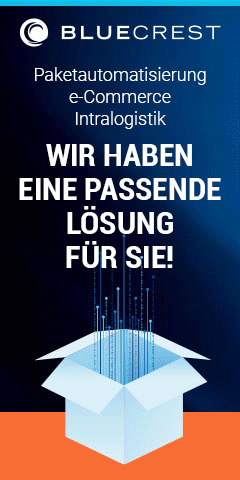
The Essential 5: Must-Have Attributes for Online Shopping and Delivery to Meet Customer ExpectationsHow to increase loyalty and attract new customers, when their willingness to spend dwindles

Well, it’s already mid-March. Valentine’s Day, Women’s Day have passed, spring is already here. March is the month of wardrobe renewal for the summer season. They all seem to be such good occasions to spend money. But are they yet?
Preliminary data suggest that consumerism, which in 2022 was lower than in previous years, continues its downward trend. Obviously, spring and blooming flowers will not compensate for the shopping anxiety caused by inflation, war and employment uncertainty.
It’s becoming more difficult than ever for retailers to mitigate higher operating costs, shrinking markets and increased competition. The profit margin is lower than ever. Prices cannot further go down. So how do you keep doing business in retail?
We’re launching a series of articles assessing retailers‘ options to keep their businesses afloat through 2023, using this time to improve operations, streamline processes, update technology and prepare for the next growth cycle.
In this article, we’re going to start with something every retailer is thinking about. What is it that keeps customers coming back and what brings new ones? Sure, it’s the highest quality at the lowest price. But when your margins are already at rock bottom, what else can you do to meet the expectations of your customers? What do customers really need and want when ordering? Let’s take a closer look at customer preferences throughout the entire buying process, from finding the product to delivering and post-delivery.
Convenience
One of the key growth drivers for retail in general and ecommerce in particular is convenience. The ability to buy what you want, when you want it, from the comfort of your own home has been, and continues to be, a game-changer for the entire industry.
According to a study by the National Retail Federation, 97% of shoppers have abandoned a purchase because it wasn’t convenient enough for them.
Convenience means giving customers the options that best fit their lifestyle and the habits that have emerged in the pandemic (for example, shopping from home, a variety of delivery locations, as well as the choice of the payment method that works best). It covers the entire purchase journey, from the inception of the need and the first click on a site, to the moment the product is in their hands and they begin to use it. Convenience should include the ease of navigating, finding products, and making a purchase on an online shopping site. Customers want it to be simple, straightforward and fast. They don’t want to waste time figuring out how to use a site or app.
If we were to take a look at some of the markets in which we provide our services, we would see both similarities and differences. In Romania, for example, the above attribute is particularly important. Customers are becoming more tech-savvy and expect a user-friendly online shopping experience. In Poland, customers are looking for an online shopping experience that is easy to use, but also one that is secure and fast. While in Greece, shoppers are looking for an online shopping experience that is not only easy to use, but also offers a variety of products at affordable prices.
Speed
The second attribute customers expect from the online shopping experience is speed. From the moment they start browsing to the moment they receive their products, customers want their online shopping experience to be fast and efficient. They want quick and easy product access, fast and secure checkout, and fast delivery. In fact, 55% of consumers say they consider retailers that offer fast shipping when choosing a retailer, according to The 2022 Omnichannel Retail Report. The data assess that 66 percent of retailers offered next-day delivery in 2022, up from 48 percent in 2020.
But there’s a catch. Speed isn’t necessarily about being fast. In fact, when it comes to the delivery of products, the speed needs to be in sync with the rhythm of the customer. Yes, some will need their groceries or printer cartridge refill within the hour. But others will need their refrigerator to be delivered to them on a Saturday. Or they will simply leave the product in a locker for three days until they can find the time to come by and pick it up. Speed, then, goes hand in hand with convenience. Retailers need to be there for their customers, where, when and with the means that are appropriate to each of their lifestyles and needs.
In terms of speed, we also see differences in consumer expectations from one market to the next. In Romania, it has become standard to deliver the next day. This is because there was a surge in e-commerce during the pandemic, so couriers have implemented the latest technologies that enable speed. In Poland, customers are looking for a fast and secure online shopping experience. Delivery times are 48 to 72 hours. Here, lockers are preferred, allowing customers to choose the moment when they collect their parcel. In Greece, with delivery times of 72 to 96 hours, shoppers want an online shopping experience that is predictable and affordable. Geography is a key factor here as there are many islands where parcels have to be transported by ferry.
Transparency
Transparency is another important factor for shoppers in their choice of one online store over another.
They want to know what they are buying, exactly how much it is going to cost, where it is coming from, and how it is going to be delivered. From the moment they start browsing to the moment they receive their products, they want complete transparency. This includes product information, delivery information, and the ability to track and trace their orders.
Customers want to be informed about the status of their order and the delivery stages throughout the entire delivery process. They are no longer willing to plan their daily schedules around the delivery interval, or even wait days to receive their package.
In this respect, customers in all markets are looking for exactly the same thing: an online shopping experience that is transparent, with clear product information and delivery tracking. Some of them want to know about the intermediate stages of delivery, but most of them just want to have an accurate delivery timeframe that will be met.
Reliability
The fourth attribute customers have in mind for their online shopping experience is reliability. In order to move beyond the transactional stage and begin to build brand loyalty, retailers need to be able to deliver on their promises at all times. In order to do that, they need to be available around the clock and provide customer support when it is needed. And when problems do occur, customers expect the retailer to be proactive, to respond quickly to find a solution, and if the customer has something to say, to listen and act on it. If the retailer’s processes are built around the shopper and put the shopper’s needs above all else, then most of the time mistakes will be forgiven and the shopper’s trust will build and become brand loyalty.
In order to build a long-term relationship with the customer, all of the above must be planned, implemented, and continually updated. Because in today’s market environment, trust is built in time, but can be broken very quickly. Brands don’t get a second chance when it comes to being chosen by their customers.
Flexibility
The fifth attribute customers want to see when they shop online is flexibility. Customers want to have an online shopping experience that can adapt to their needs and preferences. They want to be able to do their shopping from anywhere, at any time, on any device. They also want the ability to easily return or exchange products when the need arises. They want multiple payment, delivery and value-added service options. Or they want to be offered the best option for their lifestyle. If enough customer data is available and advanced algorithms are in place, such a choice is possible.
What should retailers and e-commerce players do to stay in the game?
So, despite their reduced willingness to spend, customers are still selective and expect to receive top-quality products with premium services attached to them. Online stores that provide a seamless and satisfying experience in these areas are likely to see an increase in customer loyalty and a rise in sales. Conversely, retailers that fail to meet customer expectations will likely see declining satisfaction and potential market loss.
How can retailers give customers a simple, intuitive, fast, personal experience that includes all of the above and still contain costs?
Modernizing their logistics ecosystem, streamlining processes, upgrading technology and improving the experience is the right answer. Open platforms, delivered as a service, can do all this without significant cost, lengthy implementation and skilled labor.
In order to meet the expectations of their customers, e-commerce companies can choose from a variety of tactics and technologies. Integrating systems to provide a seamless online shopping experience is one such tactic. This involves creating a cohesive platform that is easy to use, fast, and reliable by integrating the website, payment system, and delivery system. What’s more, with open platforms, they can also integrate dozens of marketplaces and their brick-and-mortar stores, all their fulfillment centers. This way, their customer experience is seamless across all channels.
Another tactic that is being used by e-commerce companies is the diversification of their delivery options. This includes offering different delivery options such as next day delivery, same day delivery, and standard delivery. These options are designed to meet the needs and preferences of customers. In addition, companies are using AI-based decision-making to select the best delivery option for each parcel. This technology determines the most efficient delivery option using data such as location, parcel size, and customer preferences.
Data-driven, real-time management is also becoming more and more popular among e-commerce companies. This involves using data to make informed decisions in real time. For example, adjusting delivery times, changing delivery routes, and managing inventory. This helps ensure that delivery times are met and products are delivered on time, improving the overall customer experience.
Finally, ecommerce companies are focusing on personalization. This involves using data to customize the online shopping experience for each customer. This includes personalized product recommendations, delivery options, and promotions and discounts. By providing a personalized experience, e-commerce companies can help retain customers and increase sales.
Conclusion
Customers are aware of the influence they can have on the brands they buy from, so quality expectations will be increasingly high.
For any company that wants to differentiate itself from the competition and maintain customer satisfaction, personalizing the experience to each customer’s preferences is imperative. With Postis, you can be one step ahead of this demand.
If you are interested in learning more about how to create exceptional customer journeys, please get in touch with us.
Quelle: www.postis.eu









